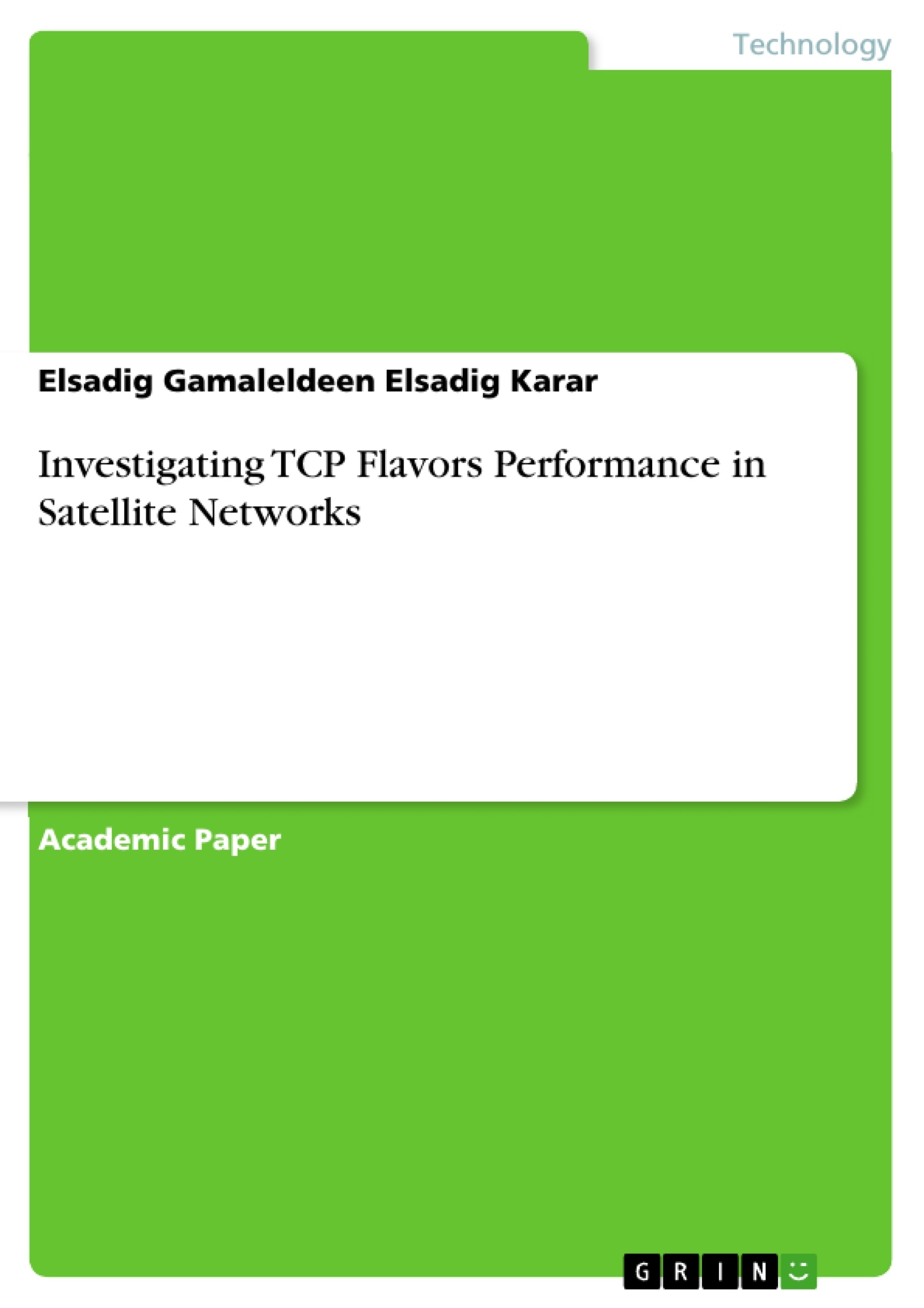Transmission Control Protocol (TCP) is the core of the Internet carry out the communication and delivery of all types of data and connect millions of computers around the world. In this paper an investigation of the performance of TCP flavors namely Reno, NewReno, Vegas and SACK based on the Bandwidth performance and the actual throughput. The network topology is a satellite network and it had been configured into different scenarios to enlarge the chances to get the desired goal. Simulation methodology is used in this study using OPNET simulation tool. The objective was to investigate and find out the performance of TCP variants according to the bandwidth in satellite network. However, the results are shocking, TCP Reno is the maximum aggressive, and greatest amount of throughput. In TCP NewReno, it follows Reno's steps by becoming the second maximum aggressive, and second highest throughput. SACK is reasonable to Reno and NewReno, but when it is compared with Vegas, it clears that it is very unfair. Lastly, Vegas shows the highest degree of fairness (minimum aggressive) and also Vegas produces the lowest amount throughput.
Inhaltsverzeichnis (Table of Contents)
- I. INTRODUCTION
- II. CURRENT STATUS OF TCP
- III. TCP VARIANTS
- A. TCP Reno
- B. TCP NewReno
- C. TCP Vegas
- D. Selective Acknowledgement (SACK)
- IV. OPNET SIMULATION TOOL
- V. SIMULATION Topologies
- VI. Simulation Results
- A. First scenario
- B. Second Scenario
- C. Third Scenario
- D. Forth scenario
- E. Fives scenario
- F. Sixes scenario
- VII. Result discussion
- VIII. Conclusion
Zielsetzung und Themenschwerpunkte (Objectives and Key Themes)
This paper investigates the performance of different TCP flavors, namely Reno, NewReno, Vegas, and SACK, in a satellite network environment. The study aims to analyze the effectiveness of these flavors in terms of bandwidth performance and throughput, exploring their impact on network efficiency and user experience.
- Performance evaluation of TCP flavors in satellite networks
- Bandwidth performance and throughput as key performance metrics
- Comparison of TCP Reno, NewReno, Vegas, and SACK
- Impact of TCP flavor selection on network efficiency and user experience
- Analysis of congestion control mechanisms in satellite network scenarios
Zusammenfassung der Kapitel (Chapter Summaries)
- I. INTRODUCTION: This chapter introduces the Transmission Control Protocol (TCP) as a fundamental component of the Internet, responsible for data communication and delivery. It highlights the importance of TCP optimization for effective network performance, especially in the context of the increasing reliance on internet services. The chapter also emphasizes the significance of bandwidth or effective throughput as a key performance metric for TCP.
- II. CURRENT STATUS OF TCP: This chapter briefly discusses the latest research related to TCP congestion control, particularly focusing on RFC 8257, which introduced Quick-Start as a mechanism for optimizing data transfer rates in data centers.
- III. TCP VARIANTS: This chapter provides an overview of various TCP flavors or variants, including TCP Reno, NewReno, Vegas, and SACK. It highlights the key features and differences between these flavors, emphasizing their respective strengths and weaknesses.
- IV. OPNET SIMULATION TOOL: This chapter introduces OPNET as a powerful network simulation tool used for creating and testing complex network environments. It describes the capabilities and features of OPNET Modeler, highlighting its importance for network modeling and simulation.
- V. SIMULATION Topologies: This chapter describes the different network topologies or configurations used in the simulation study. It explains the various scenarios created for comparing the performance of different TCP flavors in a satellite network environment, emphasizing the use of fixed parameters and a droptail queuing management technique for congestion control.
- VI. Simulation Results: This chapter presents the results of the simulation study, showcasing the throughput performance of the different TCP flavors in various scenarios. It uses graphs and tables to visualize and analyze the data, providing insights into the relative performance and characteristics of each TCP flavor.
- VII. Result discussion: This chapter provides a detailed discussion of the simulation results, summarizing the findings and offering explanations for the observed performance differences between the TCP flavors. It analyzes the aggressiveness and fairness of each flavor, highlighting the strengths and weaknesses of each approach in different network conditions.
Schlüsselwörter (Keywords)
This paper explores the performance of various TCP flavors in satellite networks. Key topics include: TCP/IP protocol, TCP flavors, satellite networks, OPNET simulation, throughput, bandwidth performance, congestion control, network efficiency, and user experience.
- Citation du texte
- Elsadig Gamaleldeen Elsadig Karar (Auteur), 2018, Investigating TCP Flavors Performance in Satellite Networks, Munich, GRIN Verlag, https://www.grin.com/document/436906



